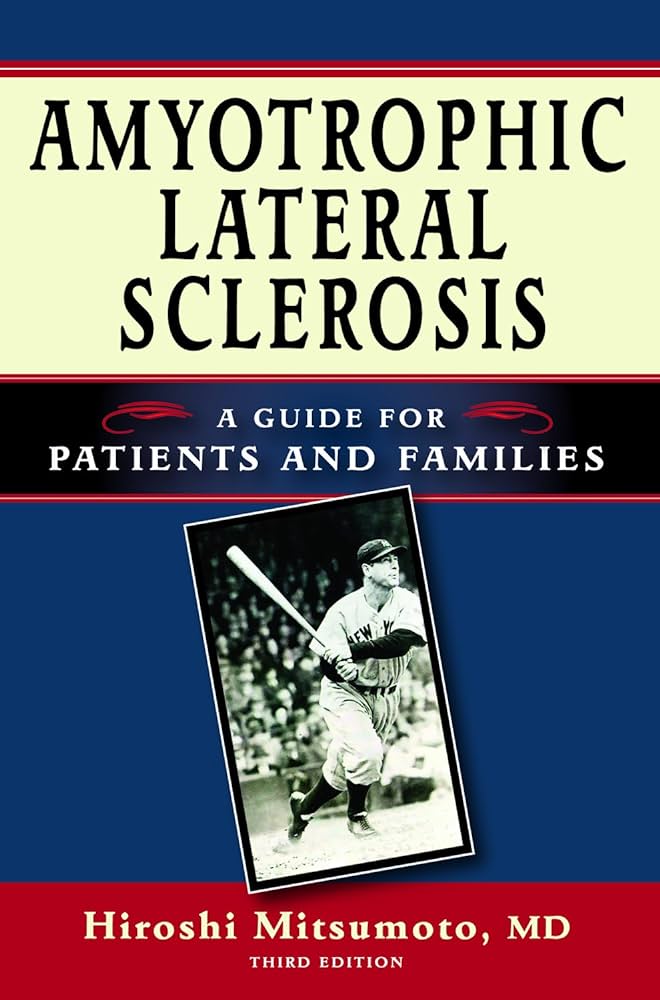Phil in SF reviewed Amyotrophic Lateral Sclerosis by Hiroshi Mitsumoto
ALS
5 stars
Another old review I'm posting publicly:
In 2009, a new edition of the book came up for review on LibraryThing’s Early Reviewers program. While too late to be of use to me, I was still interested in reading it. Most everything I learned about A.L.S. I learned by word of mouth from the A.L.S.A. folks or other patients and their families. Would a book on A.L.S. really have the goods? Robert G. Miller’s Amyotrophic Lateral Sclerosis was quite good, but it didn’t have the depth to really prepare me for the day to day miserableness that A.L.S. turned out to be for our family. I didn’t know that at the time I read the book, of course. But it’s an excellent starting point.
Hiroshi Mitsumoto’s guide covers A.L.S. with about as much depth as is possible in a book of this size. It’s breadth is amazing as well. The sheer amount of information in this book staggers me. If you or a family member has A.L.S., you want this book available.
The example I will pick is communication. Since mom had bulbar-onset A.L.S. which was very fast progressing, she lost her ability to speak early. She had the use of a Dynavox A.A.C. (augmentative alternative communication) device. Even with A.A.C. to speak for her, we had numerous communication problems. And unfortunately, none of the speech language pathologists in her county had any experience with A.L.S. The guide covers several stages of managing communications: early stage when speech is still possible, middle stage when speech isn’t really possible, and late stage when a patient is nearly completely paralyzed. It covers habits patients and family members can change. It covers both low and high technology options. Toward the end, mom controlled her A.A.C. using her feet after she lost the use of her hands. Luckily, she died before she lost the use of her feet for communication. I was dreading what we would do when she was paralyzed completely. This book details some options.
(As a side note, while it was not good that mom had A.L.S. and I would have liked more time with her had she been healthier, she suffered during her final couple of months. That death came when it did prevented further suffering for her. My use of "luckily" in the previous paragraph in a positive sense about her timely death is considered and thorough.)
Or another example: this guide has a full chapter on integrated care in A.L.S. clinics. A.L.S. affects large swaths of a person’s life and numerous health issues have to be treated. In an A.L.S. clinic, each of the specialists visits the patient in turn. The alternative primary care doctor treatment and referral system that is prevalent in the U.S. is exceedingly cumbersome for treating A.L.S. General practitioner, neurologist, speech language pathologist, respiratory specialist, occupational therapist, physical therapist, orthopedic specialist, and more. Whatcom County Washington has no A.L.S. clinic, so I had to constantly schedule all of these appointments and transport mom (never an easy task) to each. An A.L.S. clinic greatly reduces the number of visits. In addition, all the medical professionals involved in a person’s care can confer over their treatment. But there are drawbacks, as the author of that chapter notes. The visits can be extremely long and tiring, and travel to these clinics is not easy if one isn’t located nearby. Mom also found with her pair of visits to an A.L.S. clinic that if the facility does not have electronic medical records, the questions asked by each specialist duplicate 75% of the questions previously asked.
Some caveats about Mitsumoto’s book though. First off, the audience for the first edition was other doctors treating A.L.S. patients. They’ve changed the focus for the last two editions, but its roots show. The amount of medical jargon is overwhelming to the point of needing a translator at times even though I’ve got a lot of familiarity with the material. Those starting out with A.L.S. may find it too much to grok.
Second, also rooted in the medical establishment origins, is that the book is very clinical in tone. In other words, this is a doctor whose bedside manner is very much telling you the facts, rather than one that is geared toward helping you process and make decisions. Lot’s of caveats and on the other hands and infrequent "bottom line, do this" statements. Readers may be find the choices presented to be daunting. Granted, an A.L.S. patient should never be far from a doctor’s advice anyway, but I imagine it might frustrating to read something here that gives all sorts of treatment possibilities and then wait until a doctor visit can help make sense of those options.
Nevertheless, those who have to deal with A.L.S. and like an abundance of good information will find this book indispensable.

